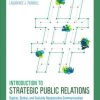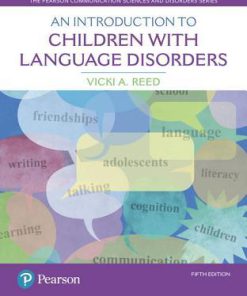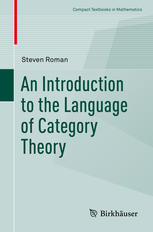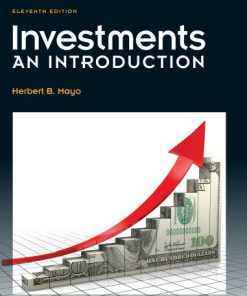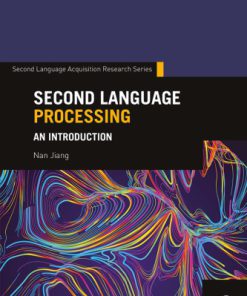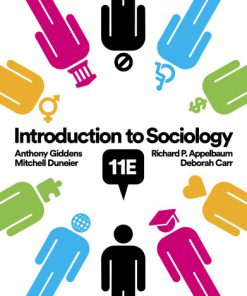An Introduction to Language 11th Edition by Victoria Fromkin, Robert Rodman, Nina Hyams ISBN 9781337559577 1337559571
$50.00 Original price was: $50.00.$25.00Current price is: $25.00.
An Introduction to Language 11th Edition by Victoria Fromkin, Robert Rodman, Nina Hyams – Ebook PDF Instant Download/Delivery: 9781337559577, 1337559571
Full download An Introduction to Language 11th Edition after payment
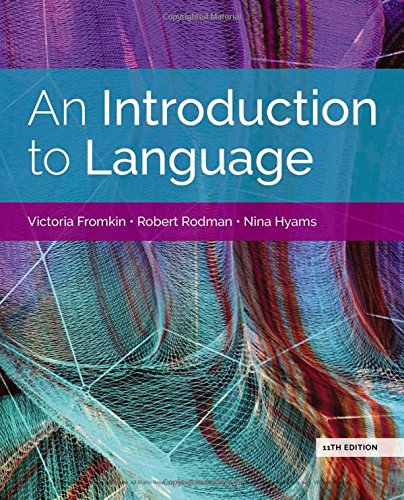
Product details:
ISBN 10: 1337559571
ISBN 13: 9781337559577
Author: Victoria Fromkin, Robert Rodman, Nina Hyams
Whether you are studying education, languages, cognitive science, psychology, anthropology, English, or teaching English as a Second Language (TESL), AN INTRODUCTION TO LANGUAGE, 11th Edition, offers the information you need in a clear and descriptive manner that assumes no prior knowledge of linguistics. This edition retains the blend of humor and broad coverage that have made the text a perennial best seller, while adding up-to-date information and new research that render each topic fresh, engaging, and current.
Table of contents:
1. What Is Language?
1.1 Linguistic Knowledge
1.1.1 Knowledge of the Sound System
1.1.2 Knowledge of Words
1.1.2.1 Arbitrary Relation of Form and Meaning
1.1.2.2 The Creativity of Linguistic Knowledge
1.1.2.3 Knowledge of Sentences and Nonsentences
1.1.2.4 Linguistic Knowledge and Performance
1.2 What Is Grammar?
1.2.1 Descriptive Grammars
1.2.2 Prescriptive Grammars
1.2.3 Teaching Grammars
1.2.4 Universal Grammar
1.2.5 The Development of Grammar in the Child
1.3 Sign Languages: Evidence for Language Universals
1.4 What Is Not (Human) Language
1.4.1 The Birds and the Bees
1.4.2 Can Animals Learn Human Language?
1.4.3 Can Computers Learn Human Language?
1.5 Language and Thought
1.6 Summary
1.7 References for Further Reading
1.8 Exercises
2. Morphology: The Words of Language
2.1 Content Words and Function Words
2.2 Morphemes: The Minimal Units of Meaning
2.2.1 The Discreteness of Morphemes
2.2.2 Bound and Free Morphemes
2.2.3 Circumfixes
2.2.4 Roots and Stems
2.3 Rules of Word Formation
2.3.1 Derivational Morphology
2.3.2 Inflectional Morphology
2.3.3 The Hierarchical Structure of Words
2.3.4 Rule Productivity
2.3.5 Other Morphological Processes
2.4 Sign Language Morphology
2.5 Morphological Analysis: Identifying Morphemes
2.5.1 Case Study 1
2.5.2 Case Study 2
2.5.3 Case Study 3
2.5.4 Case Study 4
2.6 Summary
2.7 References for Further Reading
2.8 Exercises
3. Syntax: Infinite Use of Finite Means
3.1 What the Syntax Rules Do
3.2 Sentence Structure
3.2.1 Constituents and Constituency Tests
3.2.2 Structural Ambiguity
3.2.3 Syntactic Categories
3.2.3.1 Lexical and Functional Categories
3.2.4 Phrase Structure Trees
3.2.4.1 Phrase Structure Rules
3.2.4.2 Building Phrase Structure Trees
3.2.5 The Infinity of Language: Recursive Rules
3.3 The Internal Structure of Phrases
3.3.1 Heads, Complements, and Selection
3.3.1.1 Selection
3.3.1.2 The Three Levels of Phrases
3.3.1.3 What Heads the Sentence
3.3.1.4 The Infinity of Language Revisited
3.4 Grammatical Dependencies
3.4.1 Subject–Verb Agreement
3.4.2 Question Formation Rules
3.4.2.1 Yes–no Questions
3.4.2.2 Wh Questions
3.5 UG Principles and Parameters
3.6 Sign Language Syntax
3.7 Summary
3.8 References for Further Reading
3.9 Exercises
4. The Meaning of Language
4.1 What Speakers Know about Sentence Meaning
4.1.1 Truth
4.1.2 Entailment and Related Notions
4.1.3 Ambiguity and the Principle of Compositionality
4.2 Compositional Semantics
4.2.1 Semantic Rules
4.2.2 When Compositionality Goes Awry
4.2.2.1 Anomaly
4.2.2.2 Metaphor
4.2.2.3 Idioms
4.3 Lexical Semantics (Word Meanings)
4.3.1 Theories of Word Meaning
4.3.2 Lexical Relations
4.3.3 Semantic Features
4.3.3.1 Semantic Features and Grammar
4.3.4 Argument Structure and Thematic Roles
4.4 Pragmatics
4.4.1 Pronouns and Other Deictic Words
4.4.2 Implicature
4.4.3 Presupposition
4.4.4 Speech Acts
4.5 Summary
4.6 References for Further Reading
4.7 Exercises
5. Phonetics: The Sounds of Language
5.1 Sound Segments
5.1.1 Speech Sounds, Like Snowflakes
5.2 The Phonetic Alphabet
5.3 Articulatory Phonetics
5.3.1 Consonants
5.3.2 Vowels
5.3.3 Major Phonetic Classes
5.3.3.1 Noncontinuants and Continuants
5.3.3.2 Obstruents and Sonorants
5.3.3.3 Syllabic Sounds
5.4 Prosodic Features
5.4.1 Tone and Intonation
5.5 Phonetic Symbols and Spelling Correspondences
5.6 The “Phonetics” of Signed Languages
5.7 Summary
5.8 References for Further Reading
5.9 Exercises
6. Phonology: The Sound Patterns of Language
6.1 The Pronunciation of Morphemes
6.1.1 The Pronunciation of Plurals
6.1.2 Additional Examples of Allomorphs
6.2 Phonemes: The Phonological Units of Language
6.2.1 Illustration of Allophones
6.2.2 Phonemes and How to Find Them
6.2.3 Complementary Distribution
6.3 Distinctive Features of Phonemes
6.3.1 Phonemic Patterns May Vary across Languages
6.3.2 Natural Classes of Speech Sounds
6.3.3 Feature Specifications for American English Consonants and Vowels
6.4 The Rules of Phonology
6.4.1 Feature-Changing Rules
6.4.2 Segment Insertion and Deletion Rules
6.4.3 From One to Many and from Many to One
6.4.4 The Function of Phonological Rules
6.5 Prosodic Phonology
6.5.1 Syllable Structure
6.5.2 Word Stress
6.5.3 Sentence and Phrase Stress
6.5.4 Intonation
6.6 Sequential Constraints of Phonemes
6.6.1 Lexical Gaps
6.6.2 Why Do Phonological Rules Exist?
6.7 Phonological Analysis
6.8 Summary
6.9 References for Further Reading
6.10 Exercises
7. Language in Society
7.1 Dialects
7.1.1 Regional Dialects
7.1.2 Social Dialects
7.2 Languages in Contact
7.2.1 Lingua Francas
7.2.2 Contact Languages: Pidgins and Creoles
7.2.3 Creoles and Creolization
7.2.4 Bilingualism
7.3 Language and Education
7.3.1 Second-Language Teaching Methods
7.3.2 Teaching Reading
7.3.3 Bilingual Education
7.4 Dialects of Underrepresented Groups
7.5 Language in Use
7.5.1 Styles
7.5.2 Slang
7.5.3 Jargon and Argot
7.5.4 Taboo or Not Taboo?
7.5.5 Epithets
7.5.6 Language and Sexism
7.5.7 Secret Languages and Language Games
7.6 Summary
7.7 References for Further Reading
7.8 Exercises
8. Language Change: The Syllables of Time
8.1 The Regularity of Sound Change
8.1.1 Sound Correspondences
8.1.2 Ancestral Protolanguages
8.2 Phonological Change
8.2.1 Phonological Rules
8.2.2 The Great Vowel Shift
8.3 Morphological Change
8.4 Syntactic Change
8.5 Lexical Change
8.5.1 Change in Category
8.5.2 Addition of New Words
8.5.3 Borrowings or Loan Words
8.5.4 Loss of Words
8.6 Semantic Change
8.6.1 Broadening
8.7 Reconstructing “Dead” Languages
8.7.1 The Nineteenth-Century Comparativists
8.7.2 Comparative Reconstruction
8.7.3 Historical Evidence
8.8 Extinct and Endangered Languages
8.9 The Genetic Classification of Languages
8.9.1 Languages of the World
8.9.2 Types of Languages
8.9.3 Why Do Languages Change?
8.10 The History of Writing
8.10.1 Pictograms and Ideograms
8.10.2 Cuneiform Writing
8.10.3 The Rebus Principle
8.10.4 From Hieroglyphics to the Alphabet
8.11 Summary
8.12 References for Further Reading
8.13 Exercises
9. Language Acquisition
9.1 The Linguistic Capacity of Children
9.1.1 What’s Learned, What’s Not?
9.2 Stages in Language Acquisition
9.2.1 The Perception and Production of Speech Sounds
9.2.2 The Acquisition of Phonology
9.2.3 The Acquisition of Word Meaning
9.2.4 The Acquisition of Morphology
9.2.5 The Acquisition of Syntax
9.2.6 The Acquisition of Pragmatics
9.3 The Development of Auxiliaries: A Case Study
9.4 Setting Parameters
9.5 The Acquisition of Signed Languages
9.6 The Role of the Linguistic Environment: Adult Input
9.6.1 The Role of Imitation, Reinforcement, and Analogy
9.6.2 The Role of Structured Input
9.7 Knowing More Than One Language
9.7.1 Childhood Bilingualism
9.7.2 Second Language Acquisition
9.8 Summary
9.9 References for Further Reading
9.10 Exercises
10. Language Processing and the Human Brain
10.1 The Human Mind at Work
10.1.1 Comprehension
10.1.2 Syntactic Processing
10.1.3 Speech Production
10.2 Brain and Language
10.2.1 The Human Brain
10.2.2 The Localization of Language in the Brain
10.2.3 Neural Evidence of Grammatical Phenomena
10.2.4 Language and Brain Development
10.2.5 Left Hemisphere Lateralization for Language in Young Children
10.2.6 Brain Plasticity
10.2.7 The Critical Period
10.3 The Modular Mind: Dissociations of Language and Cognition
10.3.1 Linguistic Savants
10.3.2 Specific Language Impairment
10.3.3 Genetic Basis of Language
10.4 Summary
10.5 References for Further Reading
10.6 Exercises
People also search for:
linguistics an introduction to language and communication
sociolinguistics an introduction to language and society
how languages work an introduction to language and linguistics
sociolinguistics an introduction to language and society by peter trudgill
sociolinguistics an introduction to language and society pdf
Tags: Victoria Fromkin, Robert Rodman, Nina Hyams, Introduction, Language
You may also like…
Politics & Philosophy - Social Sciences
We The People An Introduction to American Government 11th Edition Thomas E. Patterson
Business & Economics
Languages - English as a Foreign Language & Reference
AnswerKey Introduction to Language Tenth Edition Victoria Fromkin
Computers - Programming
An Elementary Introduction to the Wolfram Language 2nd Edition Stephen Wolfram
Politics & Philosophy - Social Sciences


